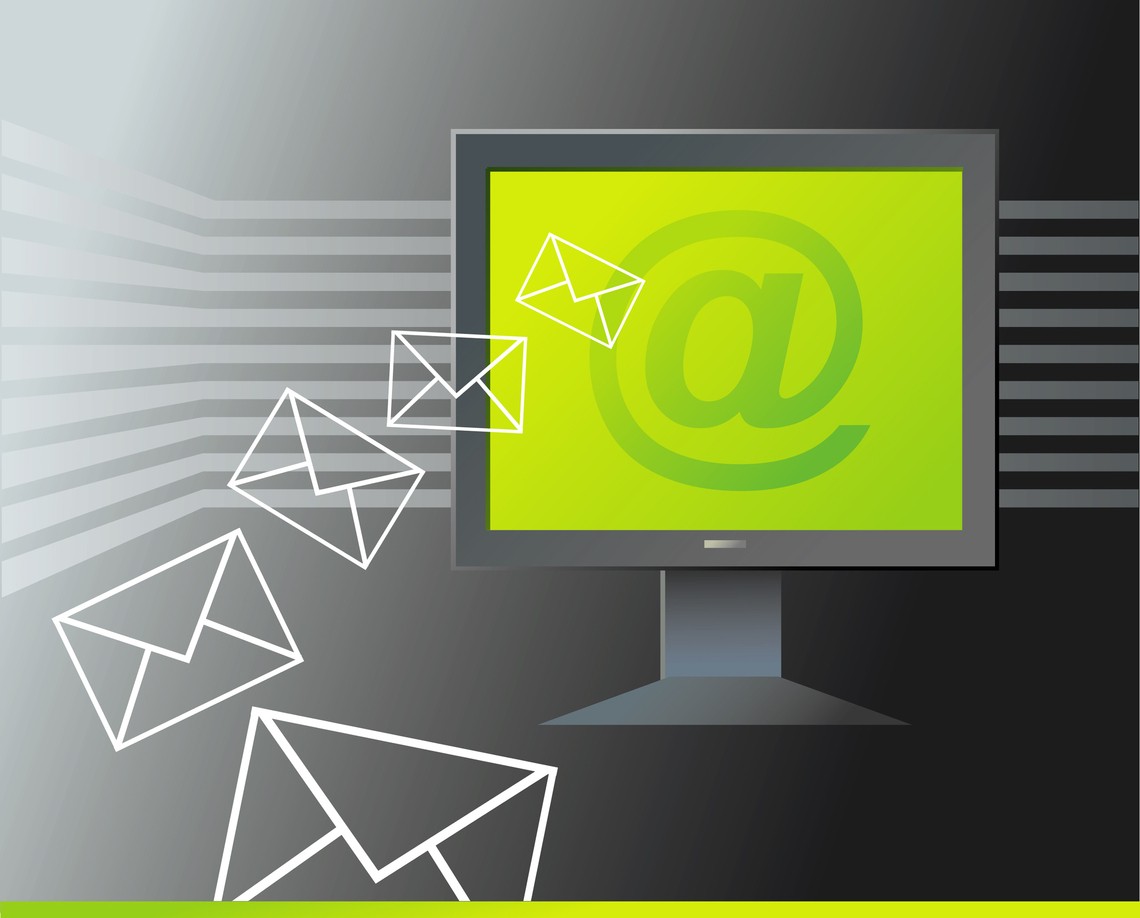Email signatures – what’s in and what’s out in 2015
When it comes to animated signatures, religious quotes, multiple kinds of fonts or career histories--just don't.
Remember when there were rumors going around that you'd soon have to buy "e-stamps" to send your emails? This technology myth originated in the early 2000's, and it's laughable now to consider the number of "e-stamps" you'd have to buy simply to get through a day's work.
Email is the go-to tool in today's workplace, due to the number of people we communicate with in other departments, offices, businesses and time zones. In a world that's always working, your best bet to get in touch with people is through email. Which is why it's so important to have an email signature that's easily readable and conveys the necessary information.
In 2015, here is what experts say is in—and out—for email signatures.

Basic contact information: IN
Your email signature has to start somewhere, and that's usually with your basic contact information. Roy Cohen, career coach and author of "The Wall Street Professional's Survival Guide," says, "Always put yourself in the seat of the person reading your email. If you have reached out with a request, what information will make it as easy as possible to respond to you? And what other items will make it more likely for the reader to feel compelled to follow up especially if you two are not acquainted?"
Essentially, this means your professional information, such as title, function and/or company affiliation, Cohen says. "When there is some mystery or uncertainty about who you really are, it is less likely that you will get a response. Online scams are far too common and that has produced a skepticism that is easy to appreciate."
Images and distracting fonts: OUT
Older websites used to feature auto-play music, slow-to-load images and fonts that were hard to read. Unfortunately, many email signatures still look like those outdated websites and need to be upgraded to a more modern style. "Compatibility is essential for signatures, because email is sent and received across a wide variety of mail clients and devices," says Kyle Turco, creative manager for TechnologyAdvice, a company that researches and analyzes business technology to help companies find IT solutions. "Having elements in your signature that only work on a specific mail client will cause problems. Standard system fonts are best. The 'boring' fonts like Arial, Times New Roman or Verdana are your friend when it comes to email. They work on every system, which gives complete control over their appearance."
You may also be tempted to add a headshot of yourself or include images from your websites. However, Turco says, "Never embed images into an email signature. They are bad news for several reasons. First, some email clients don't load images. If all of your important information is embedded in an image file, your recipient may never see it. Second, they typically show up as attachments. It's confusing and frustrating for every email from you to come in marked with an attachment if none of them have actual attachments."
Legal disclaimers: OUT
"There is much debate about the validity of legal disclaimers," says Ricardo Trigueiro, vice president of marketing and branding for Chuva Group, a firm specializing in image and brand development. "As far as a legal disclaimer, your company will add that if necessary. If you work for yourself, chances are you do not need a legal disclaimer." Be sure to ask a legal expert if you're unsure, but oftentimes general email communication won't disclose information that would warrant a legal disclaimer.
Email address: IN
Email addresses in your signature may feel redundant. After all, the email you're sending offers your email address, right? But by including your email address in your signature, you're making things easier for your contacts. Cohen says, "If you made the effort to reach out, then save the reader the effort of having to determine your email address. Also consider the possibility that the individual receiving it may want to create a contact file for you. You eliminate their need to scramble to gather that information by making it readily available." Your email may also be forwarded to other contacts, and including your email address ensures you're still easily reachable.
Career history: OUT
If you've written a new book or have been featured in the media recently for your work, including these highlights can be a great way to call attention to your expertise. However, this professional touch loses its appeal when email senders include their entire career history and every record of praise they've ever received. When your email signature is longer than your message, your self-importance seems exaggerated. "Email signatures should be short and simple," Turco says. "They need to contain enough information for your recipient to easily learn more about you—job title, company, phone number, and one or two social links—but shouldn't be your resume in email form."
Your email signature is the final impression you make on somebody when sending them a message. Be sure that message is saying what you mean it to, and end it on a high note with an email signature that's clean, professional and helpful.
(Picture Source: Internet)
HRVietnam - Collected
- Do’s and don’ts for successfully negotiating your salary (16/03)
- Like a boss: Study reveals common characteristics of senior management (13/03)
- Use company technology for this, not that (12/03)
- 6 things you must do after a professional development event (11/03)
- What to do with your first paycheck (06/03)

